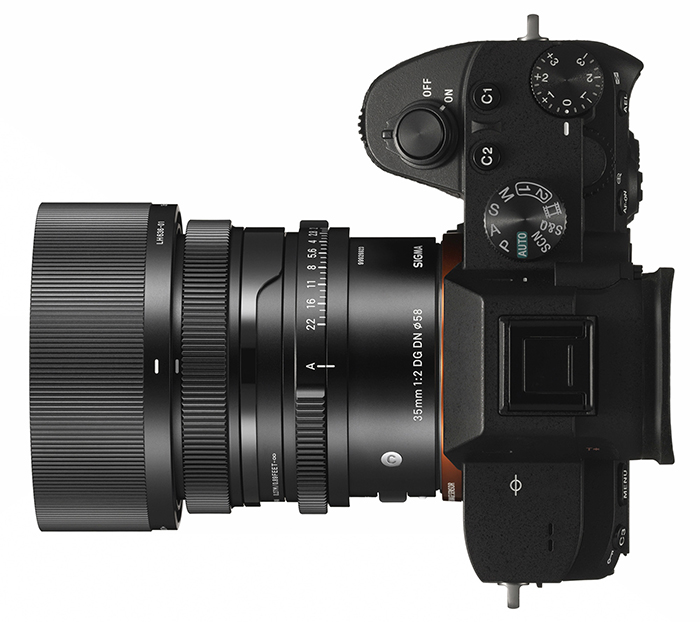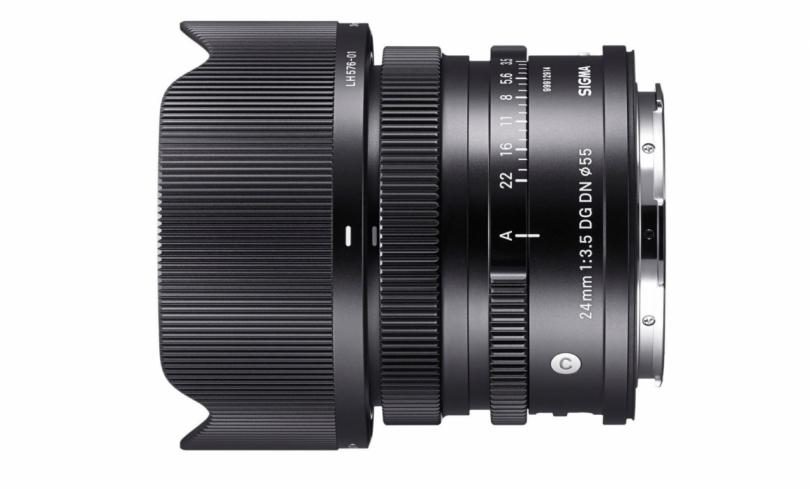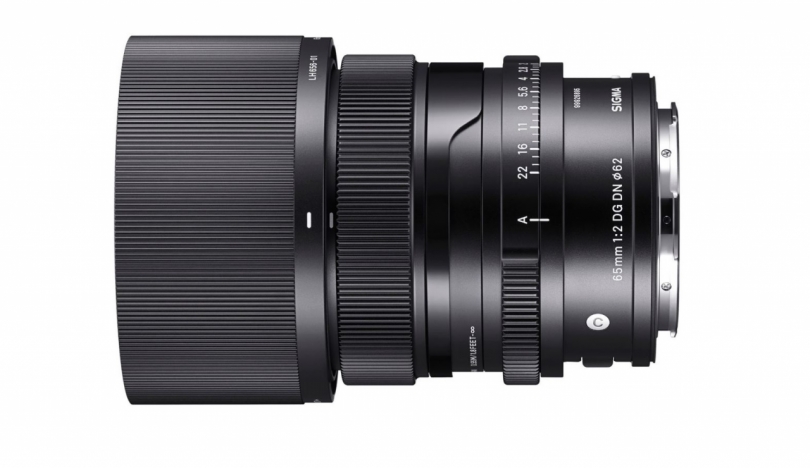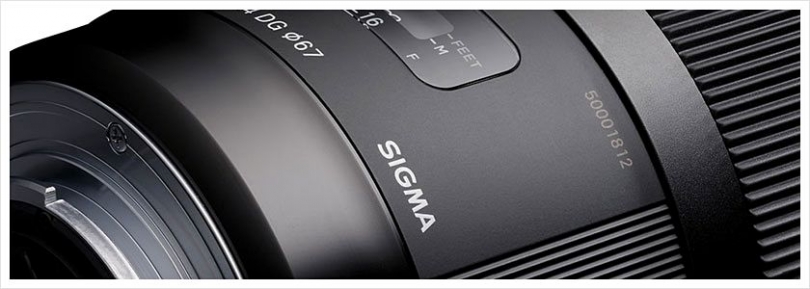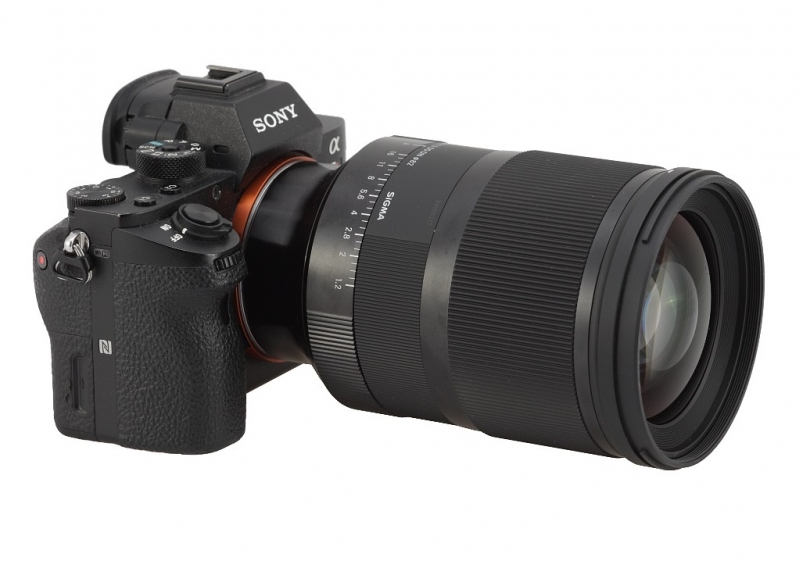
Introduction 90%Overall scoreJump to conclusion The Sigma 35mm F1. 4 DG DN Art is a designed-for-mirrorless companion to the company's first Global Vision lens, the 35mm F1. 4 DG HSM Art from 2012.
It's available for both the L-mount shared by Leica, Panasonic and Sigma, as well as for Sony E-mount and will work on both full-frame or APS-C cameras.
Its 35mm focal length and bright aperture make it well-suited to weddings, events and street photography, where its smaller, lighter design relative to adapting the 2012 version to mirrorless cameras is a definite plus. And it has potential as a video lens as well, although with a caveat which we'll discuss shortly.
Available from mid-May 2021, list pricing is set at $899.
All images edited in Adobe Camera Raw 13 with adjustments limited to white balance, exposure, highlights, shadows, white and black levels. Sharpening and noise reduction at ACR defaults.
Jump to:
Handling | Autofocus and focus breathing | Image quality | Conclusion | Samples
Key specifications:
Mount: Sony E-mount and Leica/Panasonic/Sigma L-mount
Focal length: 35mm (52. 5mm with APS-C crop)
Aperture range: F1. 4 - F16
Stabilization: No
Filter thread: 67mm
Close focus: 0. 3m (11. 8")
Maximum magnification: 0. 19x
Diaphragm blades: 11
Hood: Included
Weight: E-mount 640g (1. 41 lb); L-mount 645g (1. 42 lb)
Optical construction: 15 elements in 11 groups (2 SLD, 1 ELD, 1 FLD, 2 aspherical)
ISO 800 | 1/2000 sec | F1. 4 | Sony a7R IV
Photo by Jordan Drake
The 'original' 35mm F1. 4 Art from 2012 was designed for use with D/SLR cameras, whose sales at that point still dwarfed those of the fledgling mirrorless market. It was subsequently modified for compatibility with E-mount and L-mount mirrorless cameras as well, but this compatibility came at the expense of increased weight and barrel length, to account for the decreased flange-back distance of the mirrorless systems.
By contrast, the new lens is designed specifically to take advantage of the shorter flange-back distance of mirrorless cameras.
ISO 100 | 1/640 sec | F4 | Panasonic S1R
Photo by Dan Bracaglia
It's not quite the night-and-day difference we saw with the recent Sigma 85mm F1. 4 DG DN Art, but it's still quite noticeable. Compared to the earlier versions of the 35mm F1. 4 Art lens, this new model has shrunk by 8mm (0. 3") in length, and shed a not insignificant 110-115g (3. 9-4. 1 oz) in weight.
As well as the earlier lens, which remains available as of this writing for a discounted price of $799, the new 35mm F1. 4 DG DN has several other direct competitors. The Sigma 35mm F2 DG DN and 35mm F1. 2 DG DN for example are available for both E-mount and L-mount. And for Sony shooters, the excellent Sony FE 35mm F1. 4 G Master lens is definitely worthy of consideration.
ISO 100 | 1/1000 sec | F1. 4 | Panasonic S1R
Photo by Dan Bracaglia
Sigma's 35mm F2 is more consumer-friendly, with a slightly less bright aperture and weather-sealing only at the lens mount, but it's smaller, lighter and at $639, costs almost a third less.
The Sigma 35mm F1. 2, meanwhile, is a lot larger, weighs nearly twice as much and at $1499 costs around two-thirds more than the F1. 4. But you also get an even brighter aperture with shallower depth of field and a quick HSM autofocus drive.
ISO 100 | 1/2000 sec | F3. 2 | Panasonic S1R
Photo by Dan Bracaglia
And for Sony E-mount shooters, the Gold Award-winning Sony FE 35mm F1. 4 GM strikes us as near-perfect if you can stretch to its $1399 price-tag. Its focal length and maximum aperture are identical, but it's almost 20% lighter, 16mm (0. 6") shorter, focuses significantly faster and matches or exceeds the Sigma's image quality in all respects.
Compared to. . .
Sigma 35mm F1. 4 DG DN
Sigma 35mm F2 DG DN
Sigma 35mm F1. 2 DG DN
Sony 35mm F1. 4 GM
Price (MSRP)
$899
$639
$1499
$1399
Mount(s)
Sony E / Leica L
Sony E / Leica L
Sony E / Leica L
Sony E only
Optical construction
15 elements, 11 groups
10 elements, 9 groups
17 elements, 12 groups
14 elements, 10 groups
Aperture blades
11
9
11
11
Weather sealed
Yes
Yes, mount-gasket only
Yes
Yes
AF drive
Stepping motor
Stepping motor
Hypersonic motor
XD linear motor
Minimum focus distance / max magnification
0. 30 m (11. 8
0. 27 m (10. 6) / 0. 18x
0. 30 m (11. 8
0. 25 m (9. 8) / 0. 26x
Filter size
67mm
58mm
82mm
67mm
Diameter x Length
(no hood)
E-mount:
76mm x 112mm (3. 0" x 4. 4")
L-Mount:
76mm x 110mm (3. 0" x 4. 3")
E-mount:
70mm x 67mm (2. 8" x 2. 7")
L-Mount:
70mm x 65mm (2. 8" x 2. 6")
E-mount:
88mm x 138mm (3. 5" x 5. 4")
L-Mount:
88mm x 136mm (3. 5" x 5. 4")
76mm x 96mm (3. 0" x 3. 8")
Weight
E-mount:
640g (22. 6oz)
L-mount:
645g (22. 8oz)
Both mounts:
325g (11. 5oz)
E-mount:
1080g (38. 1oz)
L-mount:
1090g (38. 4oz)
524g (18. 5oz)
Handling
The Sigma 35mm F1. 4 DG DN Art isn't quite as compact and lightweight as we might have expected, given that it's designed specifically for mirrorless. Compared to the original DSLR-oriented 35mm F1. 4, its barrel diameter is near indistinguishable and its weight has only dropped by around 20-25 grams (0. 7-0. 9 ounces). As noted in the previous section, the size and weight advantage versus the mirrorless variant of Sigma's older design is rather more noticeable, however.
Balance of the E-mount version on our Sony a7R IV body is fairly good. It's a little bit front-heavy, largely because while its weight hasn't fallen much, mirrorless bodies tend to be a bit lighter than DSLRs. But regardless, we didn't find the pairing uncomfortable to shoot with. With that said, it might prove a bit ungainly with smaller, lighter bodies like the original Sony a7/R.
On larger L-mount bodies like Panasonic's S1 and S1R, the Sigma 35mm balances really nicely: you may find it a bit front-heavy on the more petite S5, but in general, the well-sized grips on Panasonic's cameras help make this lens feel a bit less heavy than it is.
Build quality is good, as we've come to expect from Sigma's recent prime lenses. The magnesium alloy-bodied 35mm F1. 4 feels very rugged, with a well-constructed, premium feel. Its physical controls – and especially the large, nicely-damped, buttery-smooth focus ring – reinforce that feeling.
As well as the focus ring, there are five other controls. An aperture ring allows you to dial in your chosen aperture directly, and an unlabeled switch on the right side of the lens barrel can be used either to lock the ring in its Auto position or, thoughtfully, to lock it out of the Auto position so you don't accidentally stray beyond F16 into auto mode.
The 'Auto' position on the aperture ring will control aperture, well, automatically if you're in Program Auto or Shutter Priority modes, for example, but will simply pass off aperture control to a camera command dial if you're in Aperture Priority or full Manual control.
On the left side of the barrel, top to bottom, you'll find a focus mode switch, an autofocus lock button and a "Click" switch. This last can be used to de-click the aperture ring for smooth, stepless aperture control. As for the AF lock button, it's customizable and can be changed to provide for various other functions, although the precise selection on offer will be dependent upon your camera body.
There's no in-lens image stabilization, though this isn't an especially common feature on 35mm primes (Canon and Tamron offering exceptions here). The Sigma does include comprehensive sealing against dust and moisture. In all there are 11 seals, and these protect every switch, ring, button and join between components, as well as the interface between lens mount and camera body.
Up front, there's a 67mm filter thread. This is both the same size used in the SLR-oriented lens from 2012, and also a common size that should prove easy to find at an affordable price.
It's also worth noting that the L-mount variant of the Sigma 35mm F1. 4 DG DN supports the company's optional USB dock, which can be used both to update firmware as necessary, and to tune the speed/sensitivity of the focus ring to your tastes. As of this writing, no equivalent dock accessory is available for Sigma's E-mount lenses, but firmware can be also updated via the camera for both E and L-mounts.
Back to top
Autofocus and focus breathing
The Sigma 35mm F1. 4's autofocus is driven by a stepping motor, but since it has to move only a single focusing element, focusing speeds are reasonable and focus transitions in video are very smooth. However, stills shooters used to faster, more modern linear motor speeds may be disappointed by acquisition and continuous focusing speeds.
Macro focusing is possible to a respectable minimum distance of 30 cm (11. 8"), which is sufficient to provide a maximum magnification of 0. 19x (1:5. 4).
ISO 100 | 1/8000 sec | F1. 4 | Sony a7R IV
Photo by Chris Niccolls
If you prefer to use AF to get in the ballpark and then fine-tune focus manually, you'll be pleased to hear that direct manual focus is available at all times simply by rotating the focus ring, with no need to flick switches first. Of course, you can also disable autofocus entirely with the focus mode switch if you want to forego AF altogether.
The only significant bad news on the focusing front will be of relevance to videographers, rather than still shooters. Unfortunately, the 35mm F1. 4 DG DN exhibits quite heavy focus breathing, which gives the impression that you're zooming in and out as the focus distance is adjusted. The good news for video shooters, at least so long as you can live with the focus breathing issue, is that AF is very quiet.
ISO 320 | 1/60 sec | F1. 4 | Panasonic S5
Photo by Barney Britton
And in fairness, Sigma's strongest E-mount rival, the otherwise-superb (and much more expensive) Sony 35mm F1. 4 G Master also shows significant focus breathing, albeit not quite as strongly as in this lens. But it still feels like a bit of a missed opportunity for Sigma to differentiate itself from its rival, and is something of an Achilles' heel on the video front.
Back to top
Image quality
Since the launch of its Global Vision program in 2012, Sigma has built a reputation for great image quality. Every Global Vision lens is individually checked for optical defects on a custom-made, in-house testing rig, and that coupled with excellent optical designs has seen some of its lenses outperforming even first-party glass. In most respects, the Sigma 35mm F1. 4 DG DN doesn't disappoint either, with only a couple of minor concerns and very impressive sharpness even when shooting wide-open.
Sharpness
ISO 100 | 1/1600 sec | F4 | Panasonic S1R
Photo by Dan Bracaglia
When focused in the center of the frame, the Sigma 35mm F1. 4 delivers great detail and even the corners are only very slightly softer wide open. There's a slight haze to the image, or loss of contrast, wide open, but stopping down just slightly to F2. 8 is sufficient to get a beautifully sharp image across the whole frame. Peak sharpness is reached by F4.
Alternatively, focusing in the corner does help slightly if that's where you most need sharpness and you prefer to shoot wide-open rather than stopping down a little. Put another way, any edge softness that you see wide open in brick wall shots focused at the center is likely irrelevant if you use a modern mirrorless system and place your AF point at the precise location of your off-center subject.
Bokeh
The 35mm F1. 4 DG DN's 11-bladed aperture yields nicely-rounded bokeh not just wide-open, but even as you stop down to F4. And that bokeh is very clean, as well, with no visible onion ring or soap bubble effects. Sigma has come a long way in ensuring that bokeh that does not appear busy even at the macro level in recent designs, and it shows; viewing the image in its entirety below, the out-of-focus background appears pleasingly smooth.
ISO 100 | 1/160 sec | F1. 4 | Sony a7R IV
Photo by Jordan Drake
Cat's eye effect is an issue, though, yielding football-shaped (or for non-Americans, rugby ball-shaped) bokeh, and not just in the corners but almost to the center of the frame at F1. 4.
Stopping down helps, but cat's eye is always a factor with this lens. Depending on your tastes and subject matter, it can either lend a dynamic look to your images or you may feel that it's busy and distracting.
ISO 200 | 1/1600 sec | F1. 4 | Sony a7R IV
Photo by Jordan Drake
Flare, ghosting and sunstars
Sigma includes an upgraded plastic, petal-style lens hood in the bundle with its new 35mm F1. 4, and it features both a very nice, partly rubberized barrel and a more secure button-locked bayonet attachment.
ISO 100 | 1/25 sec | F16 | Sony a7R IV
Photo by Chris Niccolls
Lens flare is very well controlled, but with the sun in or near the frame, you can nevertheless get quite a bit of ghosting. Sunstars are quite well defined when stopped down, providing a nice effect so long as you can live with the ghosting that comes hand-in-hand with them.
Longitudinal chromatic aberration (fringing)
Click or tap through to see just a bit of fringing on the chainlink fence on the center-left portion of the frame. ISO 100 | 1/8000 sec | F1. 4 | Sony a7R IV
Photo by Chris Niccolls
The 35mm F1. 4 DG DN Art is prone to a little bit of longitudinal chromatic aberration, also known as LoCA, although this is common for most lenses of this type (and its performance is far better than the original 2012-era 35mm F1. 4 Art lens for D/SLR). Where it appears, LoCA presents as magenta fringing in front of the focus plane, and green fringing behind it, and these colored fringes can be tricky to get rid of in post-processing.
Back to top
Conclusion
What we like
What we don't
Good build quality
Comprehensive weather-sealing
Lockable, declickable aperture ring
Customizable AF Lock button
Very quiet autofocus
Really sharp, even wide-open in the corners
Very clean, nicely-rounded bokeh, even stopped down
Nice sunstars
Great flare resistance
Rubberized, lockable lens hood
Not significantly smaller or lighter than its DSLR equivalent
Autofocus speed is on the slow side
Heavy focus breathing
Slight loss of contrast wide open
Prone to cat's eye bokeh even towards the center and when stopped down
Some longitudinal CA visible as magenta / green fringing
Prone to ghosting
Given that the Sigma 35mm F1. 4 DG DN Art is available on two competing lens mounts, our final thoughts depend to some extent on which mount you're shooting with.
Of course its image quality, AF performance, handling and build are essentially identical on both mounts, but the competition on each mount differs, and E-mount shooters have access to Sony's truly excellent 35mm F1. 4 G Master lens, albeit at a higher price-tag than Sigma's rival.
ISO 100 | 1/160 sec | F2. 8 | Panasonic S1R
Photo by Dan Bracaglia
Both E-mount and L-mount versions of the Sigma 35mm F1. 4 are very sharp lenses, and in most respects can deliver great image quality even when shooting wide-open. Although there are issues with ghosting and cat's eye, in many situations you'll be able to work around these.
And while it's perhaps a tad front-heavy on smaller bodies, handling is otherwise excellent. We're fans of the lockable aperture ring, silky-smooth focus ring and rubberized, lockable lens hood in particular.
ISO 100 | 1/160 sec | F8 | Panasonic S5
Photo by Barney Britton
A bigger concern is the Sigma's modest autofocus performance, especially when compared to Sony's very swift-focusing G Master lens if you're an E-mount shooter. And videographers will also want to bear in mind its significant focus breathing, although that's also an issue for the Sony lens to a somewhat lesser extent.
If you're an L-mount shooter, the Sigma 35mm F1. 4 represents a very nice option for achieving a shallow depth-of-field and overall good image quality while staying on a reasonable budget. The Sigma 35mm F1. 2 DG DN is also worthy of consideration, but you'll have to spend a lot more and work out your biceps for the benefits it can bring.
ISO 100 | 1/4000 sec | F2 | Panasonic S1R
Photo by Dan Bracaglia
But for E-mount shooters, we think the Sony 35mm F1. 4 GM represents an even better option thanks to its smaller, lighter body, faster AF, lack of ghosting and lesser cat's eye and fringing; if you can stomach the substantially higher price.
If it's simply beyond your budget, though, there's certainly plenty to like in the crisp results delivered by the Sigma, even when shooting wide-open.
Back to top
DPReview TV review
See what our team at DPReview TV has to say about the Sigma 35mm F1. 4 DG DN Art.
Back to top
Sample galleries
Please do not reproduce any of these images without prior permission (see our copyright page).
E-mount version with Sony a7R IV
$(document). ready(function() { SampleGalleryV2({"containerId":"embeddedSampleGallery_0392019233","galleryId":"0392019233","isEmbeddedWidget":true,"selectedImageIndex":0,"isMobile":false}) });
L-mount version with Panasonic S1R / S5
$(document). ready(function() { SampleGalleryV2({"containerId":"embeddedSampleGallery_6589204981","galleryId":"6589204981","isEmbeddedWidget":true,"selectedImageIndex":0,"isMobile":false}) });
Back to top
Scoring
Back to top
. dpreview.com2021-6-18 17:00


